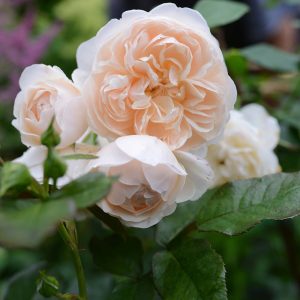Description
Paeonia is a genus of herbaceous perennials that are prized for their showy and fragrant flowers. They are commonly known as peonies and are native to Asia, Europe, and North America. The large, ruffled flowers come in a variety of colors, including pink, red, white, and yellow, and bloom in late spring to early summer. The foliage is also attractive, with deeply lobed green leaves that remain throughout the growing season. Paeonias prefer well-drained soil and full to partial sun exposure. They are often used in borders, mixed herbaceous borders, or as cut flowers. Some popular cultivars include ‘Sarah Bernhardt,’ ‘Coral Charm,’ and ‘Bowl of Beauty.’ Paeonias can be paired with other perennials such as irises, alliums, and salvia to create a stunning cottage garden look.
Key Facts
- Common Name(s):Peony ‘Alexander Fleming’
- Hardiness:Fully hardy
- How big will I get? Paeonia ‘Alexander Fleming’ can grow to a height of 1m and a spread of 1m.
- Did You Know That:Peonies can live up to 100 years if they are cared for properly?
Plant Calendar
A rough guide to how this plant will change through the year.
| Jan | Feb | Mar | Apr | May | June | July | Aug | Sept | Oct | Nov | Dec | |
| Flowering Time |  |
 |
||||||||||
| Foliage Colour |  |
 |
 |
 |
 |
 |
 |
 |
 |
| J | F | M | A | M | J | J | A | S | O | N | D |
 |
 |
||||||||||
 |
 |
 |
 |
 |
 |
 |
 |
 |
Care Guide

Soil Requirements
Paeonia ‘Alexander Fleming’ prefers moist but well-draining soil. This plant can grow in soil with a wide range of pH levels, it is not picky about the pH level of the soil.

Best Position
Paeonia ‘Alexander Fleming’ prefers a sheltered position and can cope with either full sun or partial shade.

Maintenance
Paeonia ‘Alexander Fleming’ should be deadheaded regularly to promote the production of new flowers, it can then be cut back hard once the flowering period is over, this will help to promote plenty of fresh growth the following Spring.

Pest, Diseases and Wildlife
Paeonia ‘Alexander Fleming’ can have problems with eelworm, it can be vulnerable to certain diseases such as honey fungus, virus’ and peony wilt. It is toxic to cats, dogs and horses.





